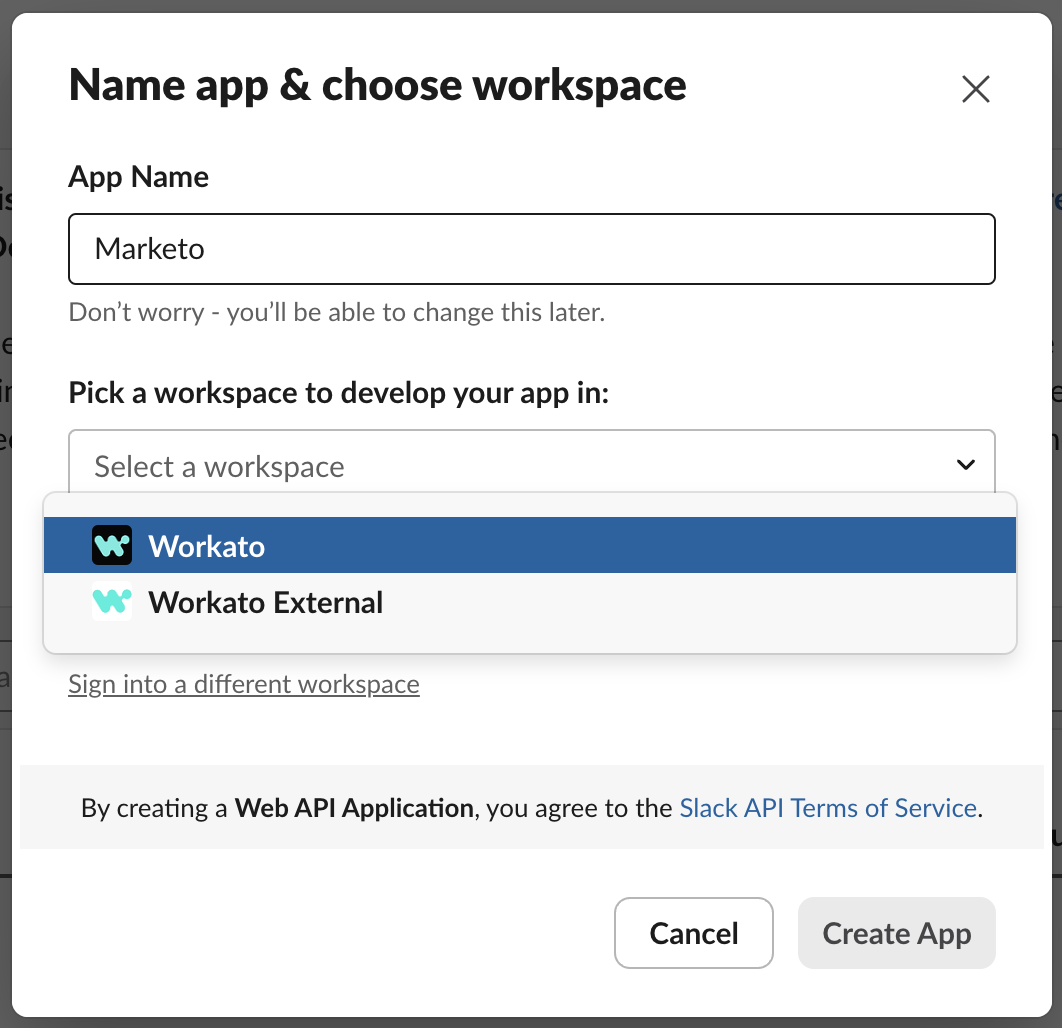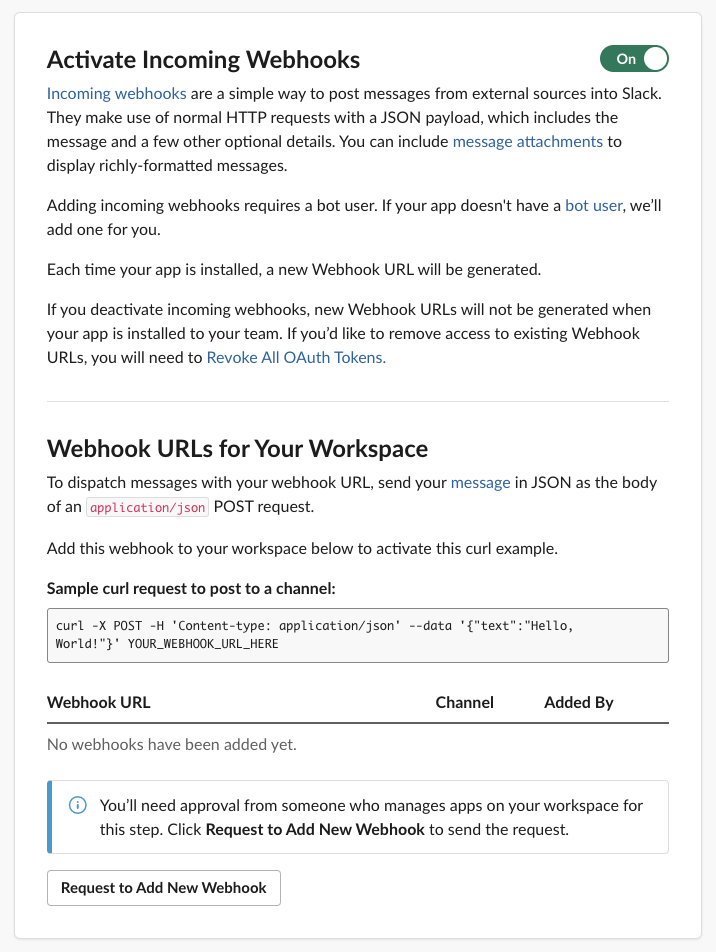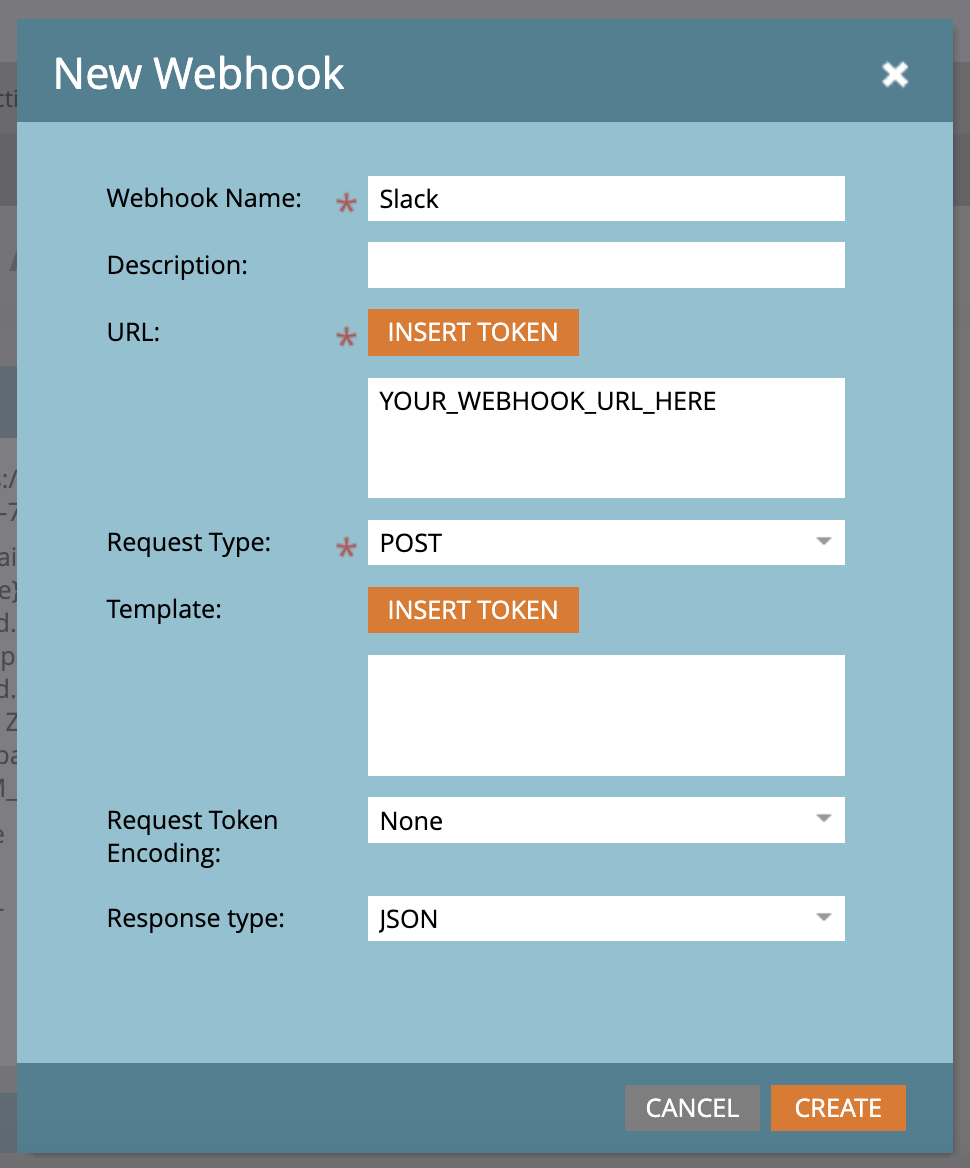By integrating Marketo and Slack you can send notifications and automate more complicated workflows like routing leads, requesting approvals, and managing campaigns.
At Workato, we’ve found that automating workflows between Marketo and Slack helps bust the silo between sales and marketing and turn marketing activities into more opportunities.
This article will teach you how to integrate Marketo and Slack using two methods:
- Webhooks
- Workato
Note that Marketo deprecated the Launchpoint Slack integration, previously their native option.
When to integrate with a webhook
In the Marketo Admin panel, you can set up a webhook that makes it possible to share data between Marketo and Slack via a POST request. This type of HTTP request has a JSON payload, i.e. data package detailing the trigger event. Here’s how the webhook works, briefly:
- A flow step “Call Webhook” in Marketo triggers the webhook
- Marketo sends a request to Slack’s endpoint
- Slack processes the request’s payload and performs the prescribed action, i.e. it sends a message or triggers a workflow app
Webhooks generally handle simple data exchanges and trigger-based actions. For example, you might set up a webhook and then use the “Call Webhook” flow step in place of the “Send Alert” flow step. This lets you send a Slack notification instead of an email notification for:
- Interesting Moments
- Form fills
- Website visits
- Person Score
- MQLs
- Inactivity
- Results and reports
How to set up a webhook between Marketo and Slack
You will need to be a Marketo admin to set up a webhook. You will also either need to be a Slack workspace admin or get the approval of your admin to set up the associated Slack app.
Here are the steps:
- Create a new Slack app.
- Select “From scratch”
- “App Name” can be “Marketo”
- Choose your workspace
- Click “Create App”

- Select “Incoming Webhooks”
- Toggle “Activate Incoming Webhooks” on
- Scroll down to “Request to Add New Webhook” or “Add New Webhook”
- Copy the “Webhook URL”

- Create a new Webhook.
- Open Marketo
- Navigate to “Admin” > “Integration” > “Webhooks”
- Click “New Webhook”
- Configure the Webhook.
- “Webhook Name” can be “Slack”
- “URL” is the “Webhook URL” from Step 2.c
- “Request Type” is “POST”
- “Response Type” is “JSON”
- Click “Create”

When to integrate with Workato
Workato is an enterprise orchestration platform where you can integrate with Marketo and Slack APIs to enable complex automation scenarios, including conditional logic, data transformation, and multi-step processes. This allows for more sophisticated integrations and business logic.
For example, you could use the connector to automate:
- Lead routing
- Approval requests
- Campaign management
- Sales insights
How to set up a Marketo-Slack integration
You will need to create and authenticate two connectors in Workato: Marketo and Slack. The Marketo connector uses the Marketo REST API, while the Slack connector uses the Slack Web API, powerful interfaces for querying information from and enacting change in Marketo and Slack.
For the Marketo connection, you’ll first need to create an API user in Marketo. More details.
For the Slack connection, you’ll need to authenticate your account with OAuth 2.0. More details.
To create the new connections in Workato, follow the steps in this video:
How to Create a New App Connection l Workato for Beginners
The difference between webhooks and Workato connections
Webhooks are simple POST requests, while Workato connectors are powerful API connections. There are some advantages to using both integration methods, which is why a hybrid strategy is typically best: using webhooks for simple use cases and APIs for more complex ones.
You can use a webhook when you need simple, real-time notifications and one-way communication from Marketo to Slack. The advantages of webhooks are that they are:
- Event driven: Webhooks can immediately communicate real-time notifications about specific events in Marketo to Slack.
- Unidirectional actions: If the integration requires simple, one-way communication from Marketo to Slack, webhooks can push data to Slack without needing to query for it.
- Require minimal overhead: Webhooks reduce the need for constant polling by pushing updates only when events occur, making them efficient in terms of network and computational resources.
Workato, on the other hand, is better suited to complex, bidirectional interactions, data synchronization, and advanced logic requirements. You can use Workato for:
- Bidirectional actions: API connections are suitable for more complex interactions that require data retrieval, updates, and the ability to perform actions in both Marketo and Slack.
- Data syncs: Schedule and manage large data transfers between Marketo and Slack.
- Conditional operations: Workato permits advanced logic, such as conditional data processing, transformation, and filtering of payloads between Marketo to Slack.
- Custom actions: API connections provide greater control over the data and actions being performed. You can tailor the integration to suit specific business processes and requirements.
